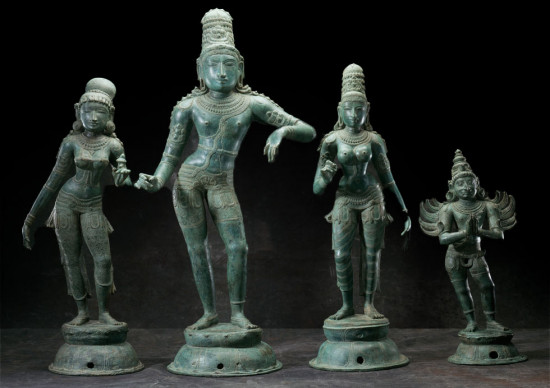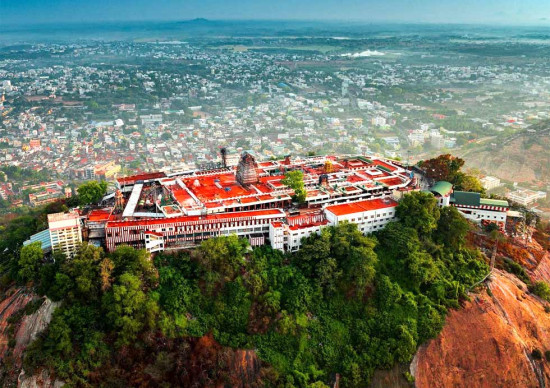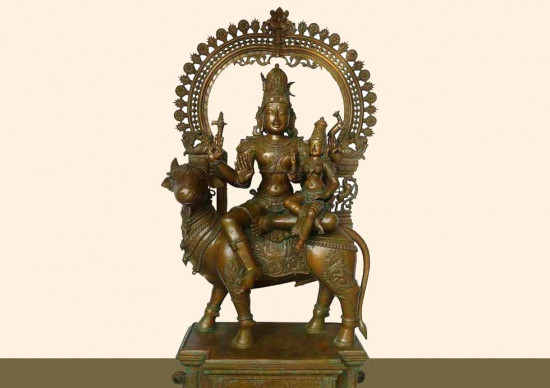In the annals of Hindu texts, few deities inspire awe and terror with such stark intensity as Ugra Narasimha, the fierce lion-man avatar of Lord Vishnu. His image, emblazoned in the minds of devotees for centuries, transcends mere aesthetics, serving as a potent symbol of cosmic balance, righteous anger, and the ultimate protector of dharma. But venturing beyond the surface, we find a complex tapestry of symbolism woven into his form and iconography, waiting to be unraveled.
A Form Born of Rage
Emerging from a pillar to vanquish the demon-king Hiranyakashipu, Ugra Narasimha embodies righteous fury at its peak. His half-lion, half-human form is a potent symbol of power beyond ordinary human comprehension. The lion head signifies raw power, untamed and primal, while the human torso represents his connection to the cosmic order. He stands tall, radiating an aura of fearsome and majesty, his claws poised to strike and his eyes blazing with divine wrath.
Iconography Of Ugra Narasimha
The iconic image of Ugra Narasimha, the half-man, half-lion avatar of Lord Vishnu, has captivated devotees for centuries. This powerful representation transcends mere aesthetics, serving as a potent symbol of divine strength, righteous anger, and the delicate balance between destruction and creation.
Visual Description
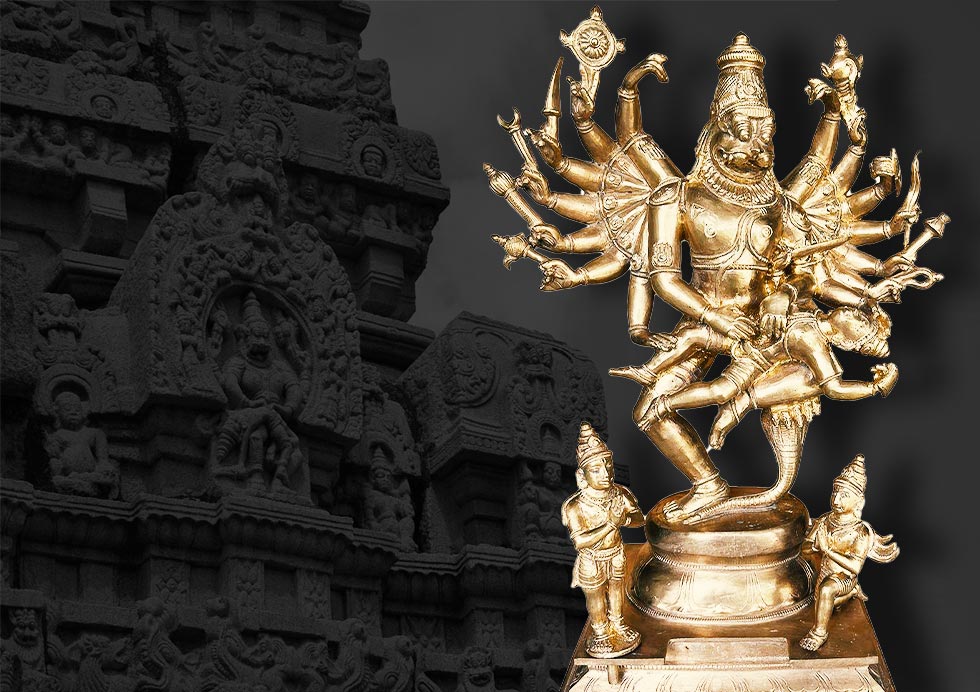
-Central Figure: Narasimha’s imposing form dominates the composition. His lion head, adorned with a fiery mane, bears sharp fangs, expressing ferocity and divine wrath. His muscular human body further emphasizes his immense power.
-Sixteen Hands: Each hand wields a specific weapon or object, illustrating Narasimha’s multifaceted role. Two hands tear apart the demon king Hiranyakashipu, symbolizing the destruction of evil. Two others hold Hiranyakashipu’s intestines, forming a macabre garland that underscores the triumph of good over evil. The remaining hands clutch iconic Vishnu weapons: Sudarshana (Chakra), Panchajanya (Conch), Pasha (Noose), and Ankusha (Elephant Goad), representing divine authority and cosmic order.
-Flanking Figures: Prahlada, the pious son of Hiranyakashipu, stands on Narasimha’s right side, his unwavering devotion contrasting with the fallen demon king. Garuda, Vishnu’s loyal vahana (mount), appears on the left, offering humble prayers in reverence.
-Composition and Symbolism: The dynamic posture, with Narasimha standing over Hiranyakashipu, reinforces the narrative of vanquishing evil. The inclusion of Prahlada and Garuda subtly highlights themes of devotion and protection.
-Sixteen Hands: Each hand wields a specific weapon or object, illustrating Narasimha’s multifaceted role. Two hands tear apart the demon king Hiranyakashipu, symbolizing the destruction of evil. Two others hold Hiranyakashipu’s intestines, forming a macabre garland that underscores the triumph of good over evil. The remaining hands clutch iconic Vishnu weapons: Sudarshana (Chakra), Panchajanya (Conch), Pasha (Noose), and Ankusha (Elephant Goad), representing divine authority and cosmic order.
-Flanking Figures: Prahlada, the pious son of Hiranyakashipu, stands on Narasimha’s right side, his unwavering devotion contrasting with the fallen demon king. Garuda, Vishnu’s loyal vahana (mount), appears on the left, offering humble prayers in reverence.
-Composition and Symbolism: The dynamic posture, with Narasimha standing over Hiranyakashipu, reinforces the narrative of vanquishing evil. The inclusion of Prahlada and Garuda subtly highlights themes of devotion and protection.
Interpretation
-Righteous Fury: Narasimha’s fearsome countenance embodies the concept of righteous anger, a necessary force against unjust powers. His actions demonstrate the consequences of defying dharma (righteousness).
-Balance of Power: Despite the violence, Narasimha’s multiple hands holding divine weapons and Prahlada’s presence emphasize the restoration of cosmic order and the ultimate triumph of good over evil.
-Inner Strength: Narasimha serves as a potent symbol, urging devotees to tap into their own inner strength to fight for what’s right and protect the innocent. His roar echoes across time, reminding us of the potential for positive change when guided by righteousness.
-Balance of Power: Despite the violence, Narasimha’s multiple hands holding divine weapons and Prahlada’s presence emphasize the restoration of cosmic order and the ultimate triumph of good over evil.
-Inner Strength: Narasimha serves as a potent symbol, urging devotees to tap into their own inner strength to fight for what’s right and protect the innocent. His roar echoes across time, reminding us of the potential for positive change when guided by righteousness.
Historical and Cultural Context
The iconography of Ugra Narasimha evolved over centuries, reflecting shifts in cultural and religious understandings. His depiction varies across regions and traditions, with some emphasizing his ferocity, while others highlighting his compassion. Regardless of these variations, the core message of righteous anger and cosmic balance remains constant.
Significance
Ugra Narasimha transcends mere visual representation. He serves as a powerful symbol, reminding us of the importance of righteous action, the delicate balance between power and compassion, and the potential for positive change within each individual. His roar continues to resonate, urging us to stand up for what’s right and embrace our own inner strength in the face of injustice.
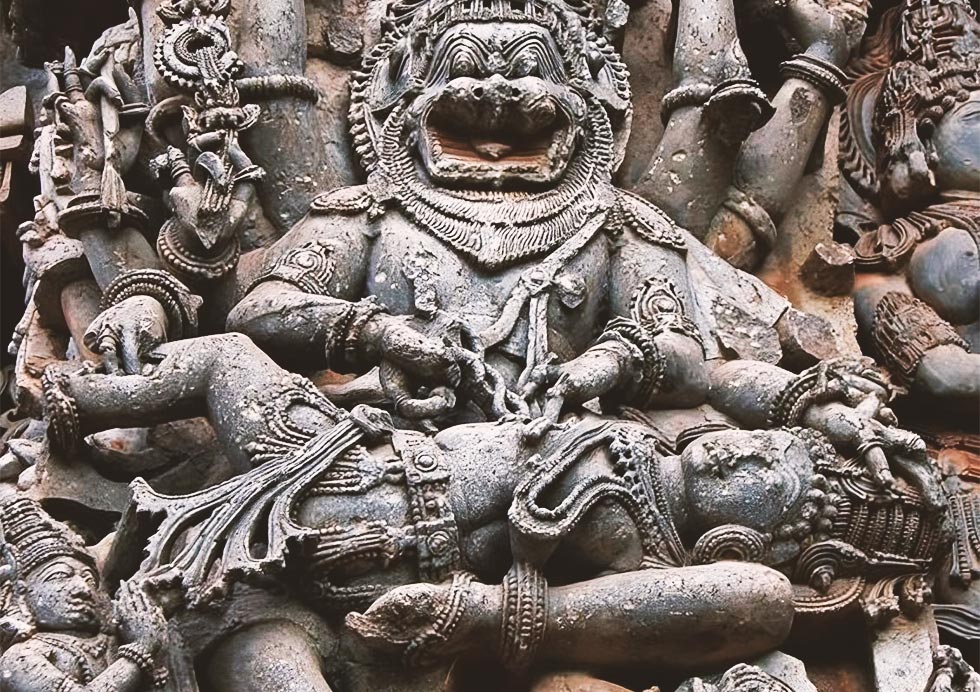
The Role Of Ugra Narasimha In Various Hindu Texts And Traditions
Ugra Narasimha, the fearsome half-lion, half-human avatar of Lord Vishnu, plays a significant role in various Hindu texts and traditions. Though his core message of righteous anger and cosmic order remains constant, his interpretations and significance vary across regions and schools of thought.
Puranic Origins
The primary narrative surrounding Ugra Narasimha appears in the Puranas, particularly the Vishnu Purana, Bhagavata Purana, and Narasimha Purana. These texts tell the story of Hiranyakashipu, a demon king who gained near-immortality and challenged the authority of Vishnu. When Hiranyakashipu’s son Prahlada defied his anti-religious pronouncements, Vishnu emerged as Narasimha to vanquish the demon king. This act restored dharma and protected the pious Prahlada.
Interpretations and Significance
-Vaishnavism: In Vaishnavism, Narasimha is considered a fierce defender of devotees and upholder of cosmic law. His portrayal often emphasizes his divine power and victory over evil. Temples dedicated to him, like the Ahobilam temple in Andhra Pradesh, depict him in awe-inspiring forms.
-Shaktism: Some Shakta traditions associate Narasimha with Shakti, the goddess of divine power. They interpret his ferocity as a manifestation of Shakti’s creative and destructive energies. In Kashmir Shaivism, Narasimha represents the fierce aspect of Shiva, the ultimate reality.
-Tantric Traditions: In Tantric traditions, Narasimha may be visualized as a yantra (mystical diagram) or invoked through mantras (sacred chants). He is seen as a powerful deity who can help practitioners overcome inner demons and attain liberation.
-Regional Variations: Across different regions, Narasimha’s depictions and interpretations vary. In South India, he is often associated with festivals like Ugadi, celebrating the beginning of the new year. In Odisha, he is seen as a guardian deity and his temples attract large numbers of devotees.
-Shaktism: Some Shakta traditions associate Narasimha with Shakti, the goddess of divine power. They interpret his ferocity as a manifestation of Shakti’s creative and destructive energies. In Kashmir Shaivism, Narasimha represents the fierce aspect of Shiva, the ultimate reality.
-Tantric Traditions: In Tantric traditions, Narasimha may be visualized as a yantra (mystical diagram) or invoked through mantras (sacred chants). He is seen as a powerful deity who can help practitioners overcome inner demons and attain liberation.
-Regional Variations: Across different regions, Narasimha’s depictions and interpretations vary. In South India, he is often associated with festivals like Ugadi, celebrating the beginning of the new year. In Odisha, he is seen as a guardian deity and his temples attract large numbers of devotees.
Contemporary Relevance
The message of Ugra Narasimha continues to resonate in contemporary times. He serves as a symbol of:
-Fighting injustice: Narasimha’s righteous anger inspires individuals to stand up against oppression and fight for what is right.
-Inner strength: He empowers devotees to tap into their own inner strength and courage to overcome challenges.
-Fighting injustice: Narasimha’s righteous anger inspires individuals to stand up against oppression and fight for what is right.
-Inner strength: He empowers devotees to tap into their own inner strength and courage to overcome challenges.
-Balance of power: Narasimha reminds us of the importance of balancing power with compassion and using it for the greater good.
Understanding the diverse roles and interpretations of Ugra Narasimha across Hindu texts and traditions provides a deeper appreciation of his enduring significance. He is not just a fearsome deity but a complex symbol that continues to offer guidance and inspiration to devotees in various ways.
Understanding the diverse roles and interpretations of Ugra Narasimha across Hindu texts and traditions provides a deeper appreciation of his enduring significance. He is not just a fearsome deity but a complex symbol that continues to offer guidance and inspiration to devotees in various ways.

